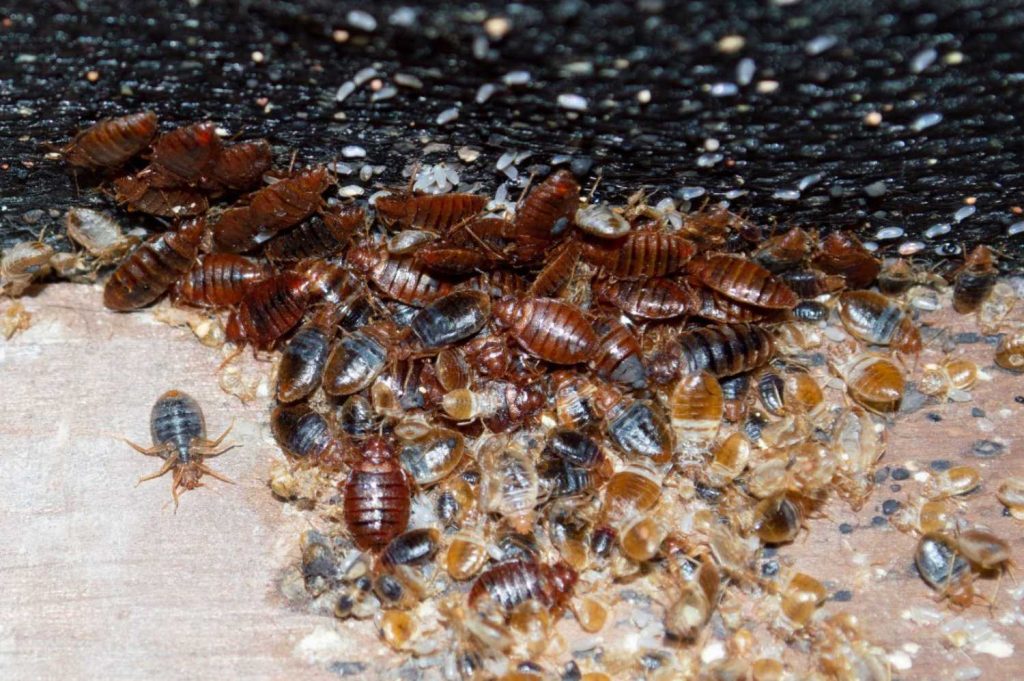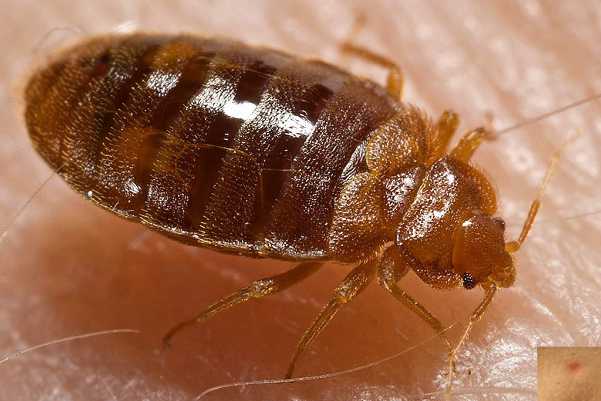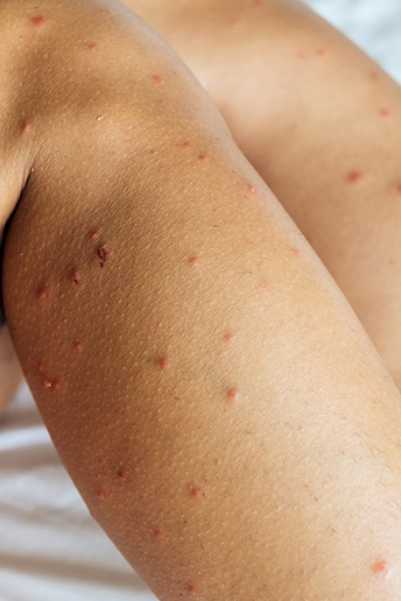This comprehensive guide covers everything you never really wanted to know about bed bugs.

Bed Bug Facts
To help understand what we are dealing with, let’s start this article with some quick-fire facts about bed bugs.
- Bed bugs can live from several months to over a year, depending upon the conditions.
- Bed bugs mate by traumatic insemination – the stuff of nightmares! It allows the female to store sperm and lay eggs periodically without requiring the constant presence of males.
- A female can produce between 200 and 500 eggs during its lifetime, laying them in small batches of up to a dozen.
- Bed bug eggs are small, oval and translucent. They are secreted in small crevices or mattress seams and will hatch in 6 to 10 days.
- Bed bugs prefer to feed on human blood, but they are opportunistic feeders and happily bite on a wide variety of warm-blooded animals – including household pets.
- Bed bugs are nocturnal and usually feed at night.
- Given the right conditions, bed bugs will feed every few days. However, they can survive several months without feeding.
- Bed bugs can withstand a wide range of temperatures, from nearly freezing to 50 degrees Celsius.
- Despite their name, bed bugs can live in any furniture type and even in cracks in your walls and floor.
Where Can I Pick Up Bed Bugs
Well, the answer to that one is almost anywhere. While France has been hitting the headlines recently, the USA probably holds the top spot where bed bugs are particularly widespread in major cities such as New York & Chicago.
Incidents of bed bugs have also been on the rise across the UK and Europe, particularly in the larger urban areas.
It is important to note that bed bugs are known to infest any accommodation type, from budget hostels to luxury hotels. They can also be found on public transport, in cinemas, and even in your workplace or school.
And they are expert stowaways.
Identifying Bed Bugs

Cimex Lectularius
To determine if you may have bed bugs, look for the following:
Physical Characteristics: – Adult bed bugs are around 4-5 mm long, with a reddish-brown colour (think apple pip). They have six legs, antennae, and a segmented body.
Bite Marks: – Bed bug bites often appear in clusters or a straight line. They can be itchy and red, resembling mosquito bites.
Bloodstains: – Bed bugs can become crushed during sleep, leaving small bloodstains on your sheets or clothing.
Faecal Stains: – Dark or rusty-looking spots on bedclothes, mattresses, or nearby areas may indicate bedbug droppings.
Cast Skins: – As bed bugs grow, they shed their skins. Finding these discarded exoskeletons is a sign of an infestation.
Checking for Bed Bugs
Regular and thorough cleaning will help spot bed bugs before they become a major infestation. Whilst cleaning, pay particular attention to the following areas:
Bed and Bedding: – Examine the mattress, box spring and bed frame for signs of infestation, such as faecal stains or cast skins.
Furniture: – Check seams, crevices and folds in upholstered furniture.
Walls and Flooring: Inspect cracks and crevices in walls, baseboards and floors for any signs of bed bugs.
Avoiding Bed Bugs
Prevention is always better than cure, so here are a few simple tips to avoid bringing them back into your home:
Inspect Accommodation: – Examine hotel rooms or rental properties for signs of bed bugs before settling in. It is always handy to pack a torch.
Protect Your Baggage: – Use luggage stands or keep your bags elevated. And away store away from soft furnishings.
Wash Clothes: – When returning from a trip away, wash all your clothing at the highest recommended temperature. Even clean clothes you have not worn.
Check Second-Hand Items: – Thoroughly inspect used furniture and clothing before purchasing.
Treating Bed Bugs Bites

Bed bug bites can be uncomfortable, itchy and have red swelling, but they are rarely infectious. They will usually clear up in about a week.
Use the same standard treatment as you would for other insect bites:
- Apply something cooling, such as a damp cloth.
- Use an over-the-counter cream available from your chemist.
- However, if the bites are severe or show signs of infection, seek medical help.
And as tempting as it may be, scratching can worsen the bites and increase the risk of infection.
Treating Your Home
If you suspect a bed bug infestation at home, it is crucial to act promptly:
Wardrobes & Other Storage: – Empty all contents into sealed bags and tie shut so nothing can escape. The last thing you want is the infestation spreading to other rooms. Wash clothes at the highest recommended temperature and tumble dry if possible. Freeze any items that cannot withstand a high temperature, leaving them frozen for 24 hours.
Bedding, Curtains & Soft Furnishings: – Remove these too in sealed bags, then wash or dry clean. Again, use the highest recommended temperature and tumble dry if possible.
Vacuum: – Thoroughly vacuum every part of the room, including any furniture and other items remaining inside the room. Carefully dispose of the vacuum bag in an outside bin.
Treatment: – Although DIY sprays are available, bed bugs are notoriously difficult to eradicate. It only takes one gravid female to survive and you have the start of a new infestation. A professional pest controller has access to more powerful insecticides and experience gained from regularly dealing with these pests.

